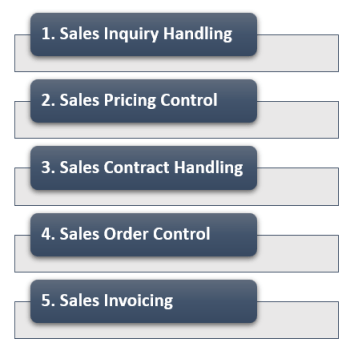ERP Service Module – Call Handling and Service Orders Control
February 12, 2025
 Why Facebook must be Prevented from being used to Interfere in Elections Worldwide
Why Facebook must be Prevented from being used to Interfere in Elections Worldwide
How Facebook can be used to Influence and Interfere in Elections Worldwide It is a known fact that social media, while easing communications and connecting Billions of people worldwide, can also be used by political parties, unscrupulous and malevolent actors, and even businesses and corporate entities to manipulate public opinion and to influence the outcomes […]
 What is Health Insurance and the Different Health Insurance Systems around the World
What is Health Insurance and the Different Health Insurance Systems around the World
Health Insurance around the World All of us would have heard the term Health Insurance in some form or the other and most of us would have taken health insurance policies to protect ourselves and our families from the prohibitive costs of healthcare. However, health insurance is a term that is actualized in practice differently […]
 Trust is the Key to Building Successful Companies and Great Nations
Trust is the Key to Building Successful Companies and Great Nations
The Importance of Trust in Building Successful Companies and Great Nations Recently the former Prime Minister of India, Dr. Manmohan Singh, made an impassioned plea for building trust among the economic agents and between the citizenry as that would have a salutary effect on the country’s economy. In a hard hitting article, Dr. Singh, decried […]
 Is the Indian Economy About to Return to the Decades of the Hindu Rate of Growth?
Is the Indian Economy About to Return to the Decades of the Hindu Rate of Growth?
What is the Hindu Rate of Growth and is the Indian Economy returning to it? For a long time from Independence to the mid 1980s, the Indian Economy used to grow at 3-4% or at the most, 5% a year. Indeed, in the decades following Independence, economists were fond of saying that India is not […]
 Analyzing Business Decision Making Process
Analyzing Business Decision Making Process
Continuous analysis of organizational decision-making process is essential to high quality and transparent decisions; otherwise a business runs with a prejudice: the notion that it is good at making decision, even if in reality it is not. And probably this is why both, decision makers and decision support system analysts try to get a profound […]
In the context of growing market competition, organizations are focusing more on closer partnership across supply chain. Increasing efficiency in sales and distribution process facilitates an organization to maintain its competitive edge. Best practice processes, embedded in an ERP package, are an enabler in this direction.
The important components of sales modules:
Integration with other modules: Sales module is a highly integrated execution module. It draws most of its input from the following modules:

Sales pricing control helps to maintain prices for items, details of discount structure and special discount given to some category of customers such as Original Equipment Manufacturer (OEM).
A price book originates with base price for the item. A single level discount rule with a minimum or maximum quantity or pricing break, is attached to price book. Additional pricing conditions such as category of suppler, delivery schedule etc. may be formulated in a matrix format, for attaching to the price book.
Normally, a validity period and minimum committed quantity forms part of the contract. Cumulative called quantity by the customer, delivered quantity and invoiced quantity are maintained in the system for control purpose. The easy way of making a contract for existing customer is by copying an old contract and doing modification in the system.
For a new customer, data related to header and lines are entered in the requisite session. The system helps in evaluating the contract at any given time, and customer may be reminded for any failure to meet their part of commitment.
Through use of templates, the system allows quick data entry process to manage products ranging from standard to Engineering to Order (ETO). On time ATP helps in identifying when a product is available for delivery and making necessary commitment/allocation for the same. Rebate and commission process enables automatic calculation of commission to be paid to sales employees and channel partners.
Functions of sales module is now augmented by various extended ERP products such as Customer Relationship Management (CRM) and several collaborative tools. E- Commerce has created a new channel for sales and distribution. Sales functionality now looks beyond ERP.
Your email address will not be published. Required fields are marked *